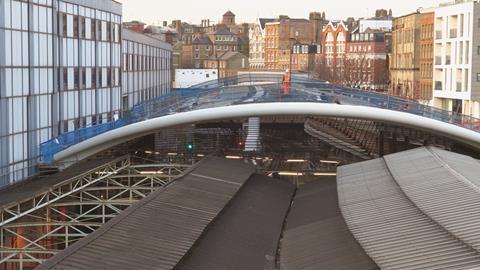Vast civil engineering projects such as Crossrail are likely to keep concrete producers busy over the next couple of years, and lengthen lead times for diaphragm wall construction, says Brian Moone
The latest lead times report indicates that, for most, the flickers of optimism over the past year, created by an increase in levels of enquiries, was nothing more than a false dawn. For many contractors, enquiries and workload have once again fallen, raising the possibility of a double dip for the construction industry.
However, one sector where last year’s optimism was not a false dawn is infrastructure: the forward order book and workload is defying the economic trend and is growing as the public sector invests in heavy civil engineering projects. This Spotlight article explores the potential impact of these large-scale schemes on lead times in the civil engineering and construction markets.
Full steam ahead
There are a number of projects that fall within the infrastructure sector that are drawing on industry resources, including those relating to the water industry and alternative energy. However, the main draw on resources has been the major rail projects, such as Crossrail. The Crossrail works programme commenced in 2009, is due to be completed in 2018 and has an estimated total value of £14.5bn. With production expected to peak in 2013, when there is forecast to be a workforce of about 14,000 people, this will have a significant impact on some key resources in the industry.
The supply chain in this sector is forecasting that thanks to Crossrail, and other major projects, the next six months will see heavy demand on diaphragm wall construction, piling and other below ground concrete works. One impact of this will be on the production capacity of concrete. Concrete suppliers are already reporting that they have a buoyant order book, particularly in the London and South-east markets, due to existing construction and civil engineering projects. One concrete supplier in London is reporting that its concrete production is already meeting its 10-year average target, having increased production by 45% last year. As this new phase of work comes on line, production levels are likely to increase even further.
This increased demand for concrete construction also shows in the lead time analysis for concrete works: on a typical construction project lead times have been reported as increasing by one week - to eight weeks - since last quarter. Contractors are also reporting a healthy forward order book for the next six months.
Over at least the next six months, the resources available to undertake diaphragm wall construction will be used to the maximum. As this specialist equipment goes into short supply, lead times are expected to increase. This will mainly affect civil engineering projects, but it may also have an impact on a number of deep basement dig construction projects.
Quick to adapt
In conclusion, major projects such as Crossrail will put pressure on the construction industry to deliver abnormal peaks in demand for its services across a wide range of specialist areas; in consequence, this will place significant strains on the industry’s resources, inevitably leading to increases in lead times as companies strive to adjust. Fortunately, our analysis over the past 10 years has shown that the construction industry has a unique ability when compared with many other industries to flex its resources to meet the peaks and troughs of demand that are thrown at it, as demonstrated in the past with projects like Heathrow Terminal 5, the Channel Tunnel, and now the London 2012 Olympics. Therefore, although the forecast is for there to be some increase in lead times associated with this work, it is reassuring to know that the increase will be minimised by the flexible nature of our industry.
























No comments yet